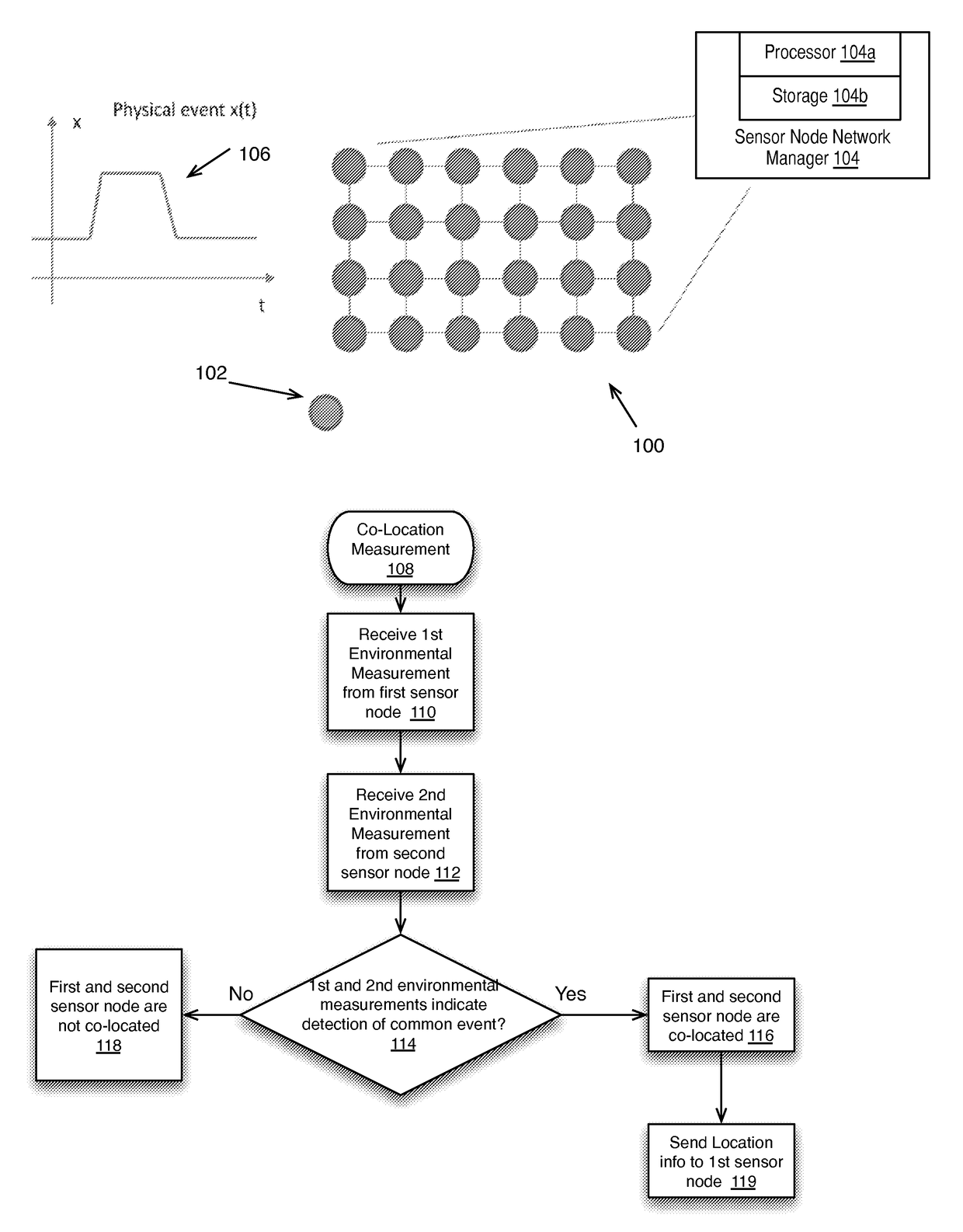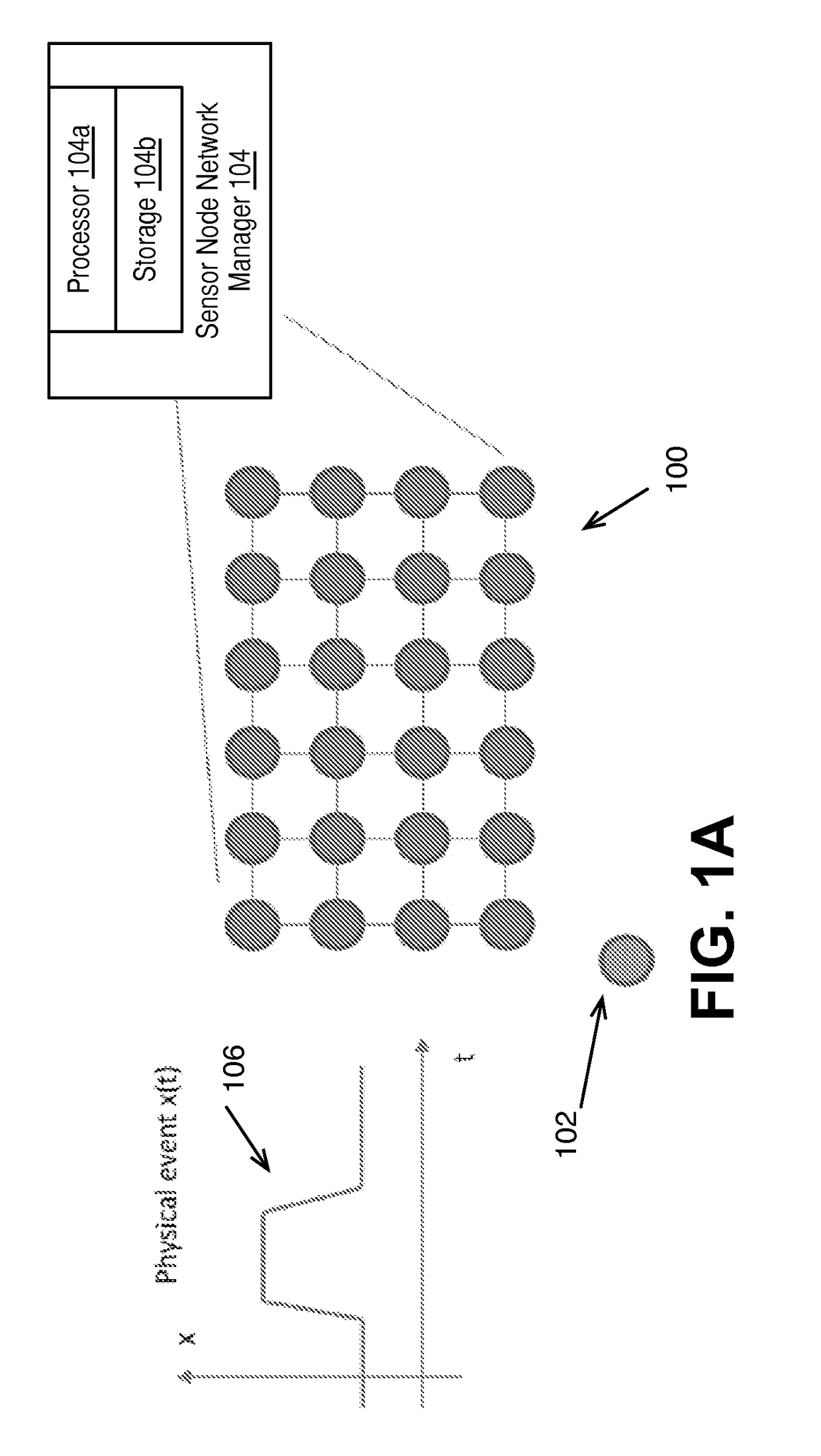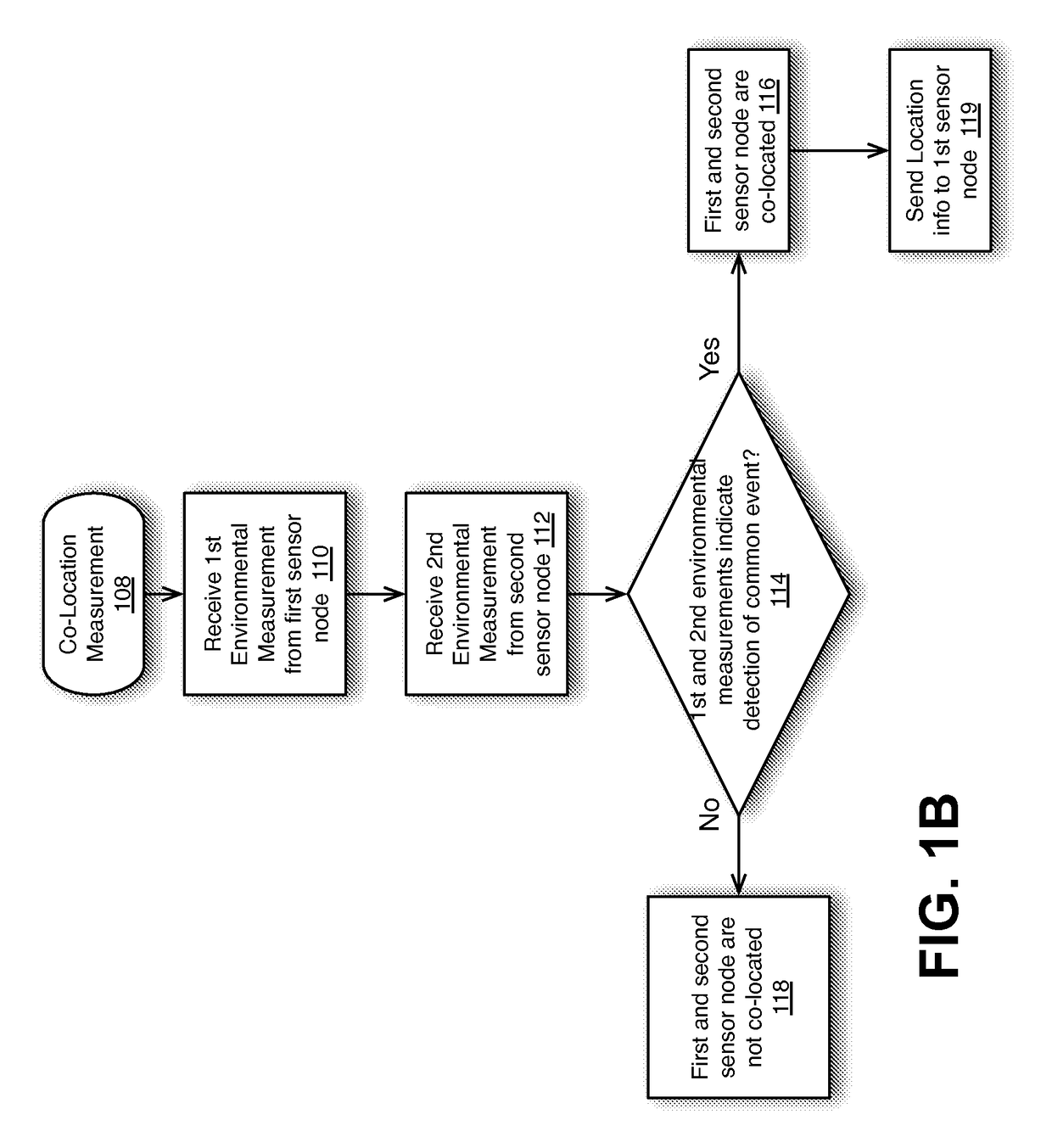System and method for sensor network organization based on contextual event detection
a sensor network and event detection technology, applied in the field of system and method for sensor network organization based on contextual event detection, can solve the problems of sensor network often evolving in size and complexity, wasting expensive batteries, and wasting wireless transmission bandwidth and computational resources of the network,
- Summary
- Abstract
- Description
- Claims
- Application Information
AI Technical Summary
Benefits of technology
Problems solved by technology
Method used
Image
Examples
Embodiment Construction
[0053]A detailed description of illustrative embodiments will now be provided with reference to the various Figures. Although this description provides detailed examples of possible implementations, it should be noted that the provided details are intended to be by way of example and in no way limit the scope of the application.
I. Sensor Node Co-Location
[0054]FIG. 1A is a schematic diagram illustrating the connection of a sensor node 102 and existing sensor node network 100 detecting the same physical event x(t) 106. The example in FIG. 1A depicts the sensor node network 100 in communication with sensor node network manager 104 operating on a data network component having a processor 104a and storage media 104b for storing data relating to the sensor node network 100 and instructions for performing sensor node network management functions. The data network component may be, for example, a server, or a gateway (e.g. M2M gateway), or any other network connected component that may be c...
PUM
 Login to View More
Login to View More Abstract
Description
Claims
Application Information
 Login to View More
Login to View More - R&D
- Intellectual Property
- Life Sciences
- Materials
- Tech Scout
- Unparalleled Data Quality
- Higher Quality Content
- 60% Fewer Hallucinations
Browse by: Latest US Patents, China's latest patents, Technical Efficacy Thesaurus, Application Domain, Technology Topic, Popular Technical Reports.
© 2025 PatSnap. All rights reserved.Legal|Privacy policy|Modern Slavery Act Transparency Statement|Sitemap|About US| Contact US: help@patsnap.com



